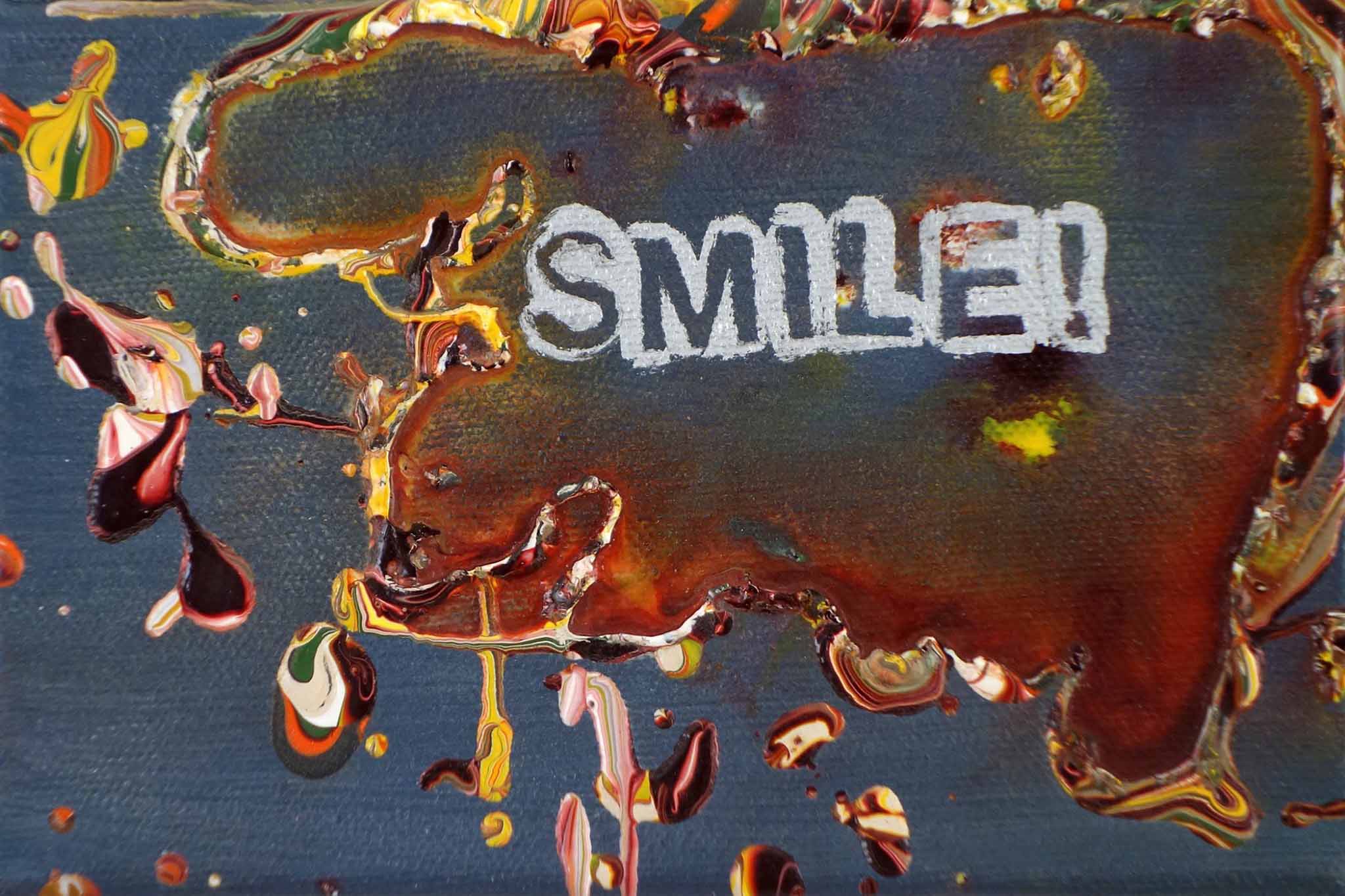
Betty Tompkins
Smile! 2016
Acrylic on Canvas
4 x 6 in. (10.16 x 15.24 cm.)
This past March, in response to Hillary Clinton’s impassioned speech following winning four different state primaries, several male commented upon the former Secretary of State’s stern facial expressions and loud tone of voice. Former United States Representative and cable news host Joe Scarborough tweeted the following suggestion to the female candidate: “Smile. You just had a big night.”
This exhibition, “Smile!,” comments on the vast and pervasive issue of the objectification of women symptomatic of the unsolicited suggestion that women often receive from men. Rather than retort, Smile! celebrates artwork by artists whose approach varies across the spectrum of art, but all share the common attribute of being unapologetically bold, unequivocally autonomous and categorically ingenious.
The two word paintings created by Betty Tompkins specifically for this exhibition are from her remarkable series of over a thousand paintings featuring words and phrases ranging from pejorative and salacious to humorous and tender that were submitted in staggering response to her requesting from her email list for words that describe women. Smile More! and the eponymous Smile! explicitly illustrate the demand this exhibition is based upon with unbiased directness. By being isolated and highlighted, the words are recontextualized from expressions of misogyny to declarations of empowerment.
Hyon Gyon's site-specific installation incorporates readymade objects, some of which have recognizable associations with traditional notions of femininity. Hair is a recurring motif in Hyon Gyon’s oeuvre, symbolizing life and renewal, as it grows even after death. For Hyon Gyon, who is influenced by the rituals of shamanism, creating art is a deeply cathartic act which results in surreal imagery that appears to be pulled intuitively from the subconscious, as well as abstract, visceral gestures characterized by expressionistic use of color and intuitive forms.
Deborah Kass’s exuberant work 'C’mon Get Happy' features this encouraging text against three flat planes of vivid color, quoting the cheerful theme song of the 1970’s hit TV show, The Partridge Family. The work is part of her series 'MORE Feel Good Paintings for Feel Bad Times', which displays recognizable language appropriates distinct rhetoric of pop culture pulled from throughout the prosperous, 20th Century post-war era that exude feelings of nostalgic well-being. Bubbling under her work’s color saturated surfaces however, are undertones of disenchantment wrought from the broken promises of postwar optimism and acute awareness of the ongoing instability of current world affairs.
'Lobstapus/Lobstapussy', is a short film starring and directed by Rebecca Goyette during her residency on an uninhabited island in Greece. Using a predominantly amateur ensemble of performers, Goyette creates a surreal world in which her character “Lobsta Girl” goes on a series of erotic adventures set in an idyllic locale. Sequined Las Vegas-style costumes and campy, tongue-in-cheek theatrics evoke John Waters’ cult classics, while the crustacean motif brings to mind Dali’s lobster themed works. Part of a larger film series, 'Lobstapus/Lobstapussy', is a richly realized apotheosis of her oeuvre, which also includes sculpture and painting. Goyette’s work challenges the assumption that women only desire traditional, heteronormative monogamy by creating fantasies that explore polyamory and gender role reversal, placing women in charge of their own sexual experiences.
Emily Noelle Lambert draws the viewer into a highly personal, whimsical world through her kaleidoscopic compositions, such as the painting Pattern Recognition seen here. Working mostly upon found materials, Lambert creates her work as though in an instinctive non-verbal dialogue with the raw contours and irregularities of the chosen surface. The layers upon layers of vibrant color and lyrical patterns on seemingly rotating, diamond shaped wooden panels emanate bursts of ebullient energy.
Emily Weiskopf’s homage to the venerated Mona Lisa smile conveys strength through its precise structure, which evokes color field’s sturdy edges and, simultaneously, geometric abstraction’s staccato rhythms. The work exudes intimate femininity by Weiskopf’s isolating and magnifying those famous lips in fleshy, carnation pink, mingled with cherry red and fuchsia. The artist creates works that feel like minimalist maps, illustrating one’s inner journey with each form like a blank marker along the proverbial road, left for the viewer to provide its individual significance.
[ Curated by Jenny Mushkin Goldman]
Exhibition viewing available by appointment only!